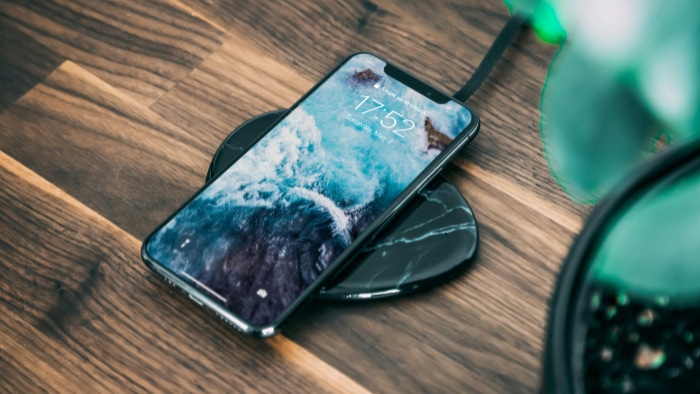The Benefits of Wireless Charging: Wave of the Future

Charging devices has transformed from a tangled mess of cords to a sleek, seamless experience thanks to the rise of wireless charging technology. Imagine a world where your smartphone, tablet, and earbuds power up by simply resting on a pad, free from the constraints of cables.
This leap forward not only signifies a shift towards more user-friendly gadgets but also marks an era where convenience meets cutting-edge innovation. As wireless charging pads become a common sight in homes, offices, and even public spaces, the way we energize our devices is getting a major upgrade.
Convenience and Simplicity
Wireless charging brings a significant shift in how we power up our devices, simplifying the process by cutting the cord, literally. This technology allows for an environment where your daily charging routine is not only streamlined but also aesthetically pleasing, free from the clutter of tangled cables and the hassle of finding the right charger for each device.
Elimination of Cables and Connectors
One of the most evident benefits of wireless charging is its ability to eliminate the need for cables and connectors. By using a charging pad, you simply place your device on the surface to start charging.
This method does away with the search for compatible cables and the struggle to plug them into your devices in the dark or under desks. It represents a step towards a more organized and efficient charging setup, making it particularly appealing for both personal and professional spaces.
Charging Multiple Devices
The ease of charging multiple devices on a single pad is another standout advantage. Many wireless chargers are designed to accommodate multiple devices at once, whether it’s your phone, smartwatch, or earbuds.
This not only saves space but also reduces the need for multiple charging outlets and adapters. It’s a game-changer for households or workspaces where multiple devices need charging, ensuring everyone’s gadgets stay powered without the clutter.
Reduced Wear and Tear on Device Ports
Frequent plugging and unplugging of devices can lead to wear and tear on charging ports over time. Wireless charging offers a gentle alternative, as it requires no physical connection that could strain or damage the ports.
This not only prolongs the lifespan of your devices but also maintains their aesthetic and functional integrity. The benefit of reduced wear and tear is a subtle yet significant advantage that wireless charging brings to the table, ensuring your devices remain in top condition for longer.
Enhanced Safety
Wireless charging isn’t just about convenience; it significantly ups the ante on safety for both devices and their users. By removing the physical connections traditionally associated with charging, this technology minimizes several risks, making the charging process safer and more reliable.
Reducing Risks with No Electrical Contacts
One of the fundamental ways wireless charging enhances safety is by eliminating the need for electrical contacts and exposed wires. Traditional chargers, with their frayed cables and worn-out connectors, can pose a risk of electric shocks or short circuits.
Wireless charging pads, however, use magnetic fields to transfer energy, ensuring that there’s no direct electrical connection to worry about. This approach significantly reduces the risk of electric shock, making charging safer in environments where water or moisture is present.
Built-In Safety Features
Wireless charging technology isn’t just passively safer; it actively works to ensure the well-being of your devices. Modern wireless chargers come equipped with a suite of built-in safety features that protect against common charging hazards.
- Foreign Object Detection (FOD): This feature ensures that charging only happens when a compatible device is placed on the pad. If metal objects like coins or keys are detected, the charger automatically shuts down, preventing overheating or damage.
- Overcharging Protection: Overcharging can diminish battery life and, in extreme cases, pose a fire risk. Wireless chargers are designed to recognize when a device has reached full capacity and then either stop charging or shift to a trickle charge mode. This not only safeguards the device’s battery but also contributes to overall safety by minimizing the risk of overheating.
By integrating these features, wireless charging platforms offer a more controlled and secure charging environment. This not only extends the life of the devices but also gives users peace of mind, knowing that their gadgets are charged in a safe, efficient manner.
With wireless charging, the focus is on delivering energy not just more conveniently, but also more safely.
Integration and Design Flexibility

Wireless charging technology is not only reshaping how we power our devices but also how we design them and integrate them into our daily lives. This leap in technology has opened the door to a world of innovative design possibilities, blending functionality with aesthetics in ways previously unimagined.
From sleek, modern gadgets to furniture and vehicles equipped with charging capabilities, wireless charging is making its mark across various sectors, enhancing both user experience and design elegance.
Innovative Device Designs
The absence of the need for ports and cables in wireless charging allows product designers more freedom when creating new devices. This flexibility means that devices can be more streamlined and waterproof, as there are fewer openings required in the design.
As a result, we’re seeing a new generation of devices that are not only more visually appealing but also more durable and resistant to water and dust. This evolution in design is making our gadgets more convenient to use and carry, fitting seamlessly into the aesthetic of a modern lifestyle.
Integration into Furniture, Vehicles, and Public Spaces
Wireless charging technology is extending its reach beyond personal devices to become a part of our everyday environments. Furniture manufacturers are integrating charging pads into tables, desks, and lamps, making it effortless to keep devices charged without cluttering spaces with cords.
In the automotive industry, cars are coming equipped with built-in charging docks, allowing drivers and passengers to easily charge their devices on the go.
Public spaces are also getting a tech upgrade with the introduction of wireless charging stations in airports and hotels, offering added convenience for people to charge their devices away from home. This integration not only serves a practical function but also enhances the aesthetics and user experience of these spaces, making technology a natural part of the environment.
Efficiency Improvements
Wireless charging technology is rapidly evolving, with significant strides being made towards enhancing its efficiency. These advancements not only promise faster charging speeds but also aim at reducing the environmental footprint of charging devices, marking a step forward in the tech industry’s efforts towards sustainability.
Advancements in Charging Speed
Recent developments in wireless charging technology have led to considerable increases in charging speeds, rivaling those of traditional wired chargers. Innovations in coil design and energy transmission have paved the way for this leap, allowing devices to charge more quickly than ever before.
This means less time tethered to a charging station and more time using your devices, enhancing user convenience. As this technology continues to improve, we can expect even faster charging times, making wireless charging an even more attractive option for powering devices.
Development of More Energy-Efficient Chargers
Energy efficiency is a critical focus in the evolution of wireless charging, with new models boasting lower energy consumption and reduced waste. These advancements not only lead to faster charging times but also to chargers that are better for the environment.
By optimizing energy use, these chargers minimize the loss of power during the charging process, ensuring that as much electricity as possible is used to charge the device, rather than being wasted as heat.
Moreover, the push for more energy-efficient wireless chargers aligns with a broader industry shift towards sustainability. Manufacturers are increasingly mindful of the environmental impact of their products, from the materials used to their energy consumption.
As a result, newer wireless chargers are not only more efficient but also made with eco-friendly materials, further reducing their environmental impact.
The Environmental Impact
The development of more energy-efficient wireless chargers holds significant implications for the environment. By reducing energy waste, these chargers help lower the overall electricity demand for charging devices, contributing to decreased carbon emissions.
Additionally, the focus on sustainability in the manufacturing process, including the use of recycled materials and eco-friendly packaging, further lessens the ecological footprint of these products.
Universal Compatibility

As wireless charging technology matures, a significant focus has been placed on ensuring it can work universally across a wide range of devices. This push towards standardization is essential in transforming how we think about powering our gadgets, moving us closer to a world where one charging pad can meet all our needs, regardless of the brand or type of device.
Standardizing Wireless Charging Technology
Efforts to standardize wireless charging technology have been ongoing, spearheaded by various organizations and industry groups. These initiatives aim to create a common set of standards that manufacturers can follow, ensuring their products are compatible with wireless charging systems worldwide.
This standardization process is crucial for both manufacturers and consumers, as it simplifies the production process and enhances the user experience by making it possible to charge a wide array of devices on a single platform.
The Convenience of Cross-Brand Charging
Imagine a scenario where your smartphone, earbuds, smartwatch, and even your friend’s phone, regardless of the brand, can all be charged on the same pad. This level of convenience is a major goal of universal compatibility.
By reducing the need for multiple charging devices and cables for different gadgets, life becomes simpler. You can share chargers without worrying about compatibility issues, and public charging spots become infinitely more useful, catering to everyone, not just users of a specific brand.
This universality not only adds to the convenience but also reduces waste and clutter, contributing to a more sustainable and efficient charging ecosystem.
Conclusion
Wireless charging technology stands at the forefront of transforming our daily interactions with our favorite devices. By eliminating the need for cables and connectors, it offers an unmatched level of convenience and simplicity, reducing clutter and the wear and tear on device ports.
Safety is significantly enhanced, with risks associated with electrical contacts minimized and advanced features like foreign object detection and overcharging protection integrated into the design. The flexibility in design and integration into everyday objects, from furniture to vehicles and even public spaces, points to a future where charging becomes a seamless part of our environment.
Perhaps most compelling is the drive towards universal compatibility, promising a future where the same charging pad powers various devices across different brands.
This evolution invites us to rethink our daily routines and the spaces we inhabit, offering a glimpse into a future where technology serves us more silently and efficiently. It encourages a reconsideration of how simplicity can be introduced into our lives, not just for the sake of convenience, but for a broader impact on the tech ecosystem.
The benefits of wireless charging extend beyond just the individual, hinting at a cleaner, more organized, and universally accessible technological future. As we move forward, the potential for wireless charging to further simplify our lives and enhance the functionality of our gadgets is immense, marking just the beginning of its impact on the world of technology.



